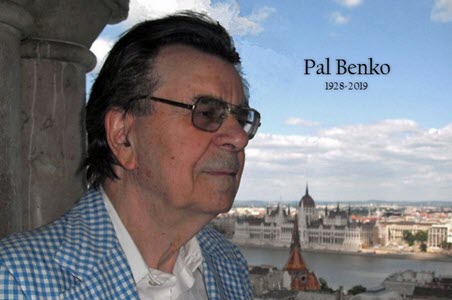Added on 9/4/2019

GM Joel Benjamin pays tribute to the late Pal Benko, who passed away a week ago.
Here is the video with Joel's analysis of two games played by the great Pal Benko.
Joel's articlePal Benko passed away last week, leaving a tremendous chess legacy. First, let’s consider his achievements as a player. He was a world-class player who twice qualified for the Candidates tournament, in 1959 and 1962. We are going to look at a game from the Curacao Candidates tournament of 1962, where he schools a future world champion—one of three games that Benko took from Bobby Fischer in his career.
Benko played on six U.S. Olympiad teams, and though he didn’t have much success in the U.S. Championship—he got here just in time to find himself blocked by Fischer—he did win the U.S. Open a record eight times.
Benko would of course later step aside to allow Fischer to play in the 1970 Interzonal, which Fischer parlayed into a sweep through the Candidates Matches and a title victory over Boris Spassky in 1972. The Benko System, used in the previous game was not Benko’s greatest opening contribution—that would, of course, be the Benko Gambit. In my opinion, that opening is one of the most profound, brilliant opening creations of all time.
It’s a gambit that is entirely strategical and long-term in nature. Let’s see it from the beginning, the debut of the Benko Gambit in International competition.
Benko’s path through life was not easy. His family was harshly treated by the Soviets during World War II, and he chafed under the restrictions of Communist Hungary. His first unsuccessful escape attempt in 1952 led to detention in a concentration camp for a year. He was able to defect during a tournament in Iceland in 1957 and soon came to live in the U.S. He didn’t have any money, but after all his hardships, Benko was happy just to be free.
Those hard times made him tough, but they did affect his demeanor. He was from many accounts, friendly and gracious to fans and fellow players alike. He was a virtuoso composer of both mating problems and endgame studies. I recall many instances where he showed some of his positions to me with great enthusiasm, and great enjoyment on my part. He had two long-running columns in Chess Life, the Practical Endgame (which taught me a lot) and Benko’s Bafflers.
This is one of the most famous Benko's "mate in three" problems. Benko showed it to his friend Bobby Fischer, and bet that Bobby would have solved it in less than 30 minutes. Benko lost. Can you solve it? White to move and checkmate in three moves.
In the late 1970s, a chess variant called “Prechess” was briefly promoted, with Benko and Arthur Bisguier asked to play a match to test it out. A forerunner of Chess960, Prechess had the players place their pieces on the bank rank where they liked, one turn at a time. Benko was kind to play some games against the teenaged Joel Benjamin at the Manhattan Chess Club. I was able to score ok with Black (remember, he was about 50 at the time) because I would wait for him to put his king down and put my king down on the other side. Then I would play for mate. With kings on the same wing, he killed me every time.
